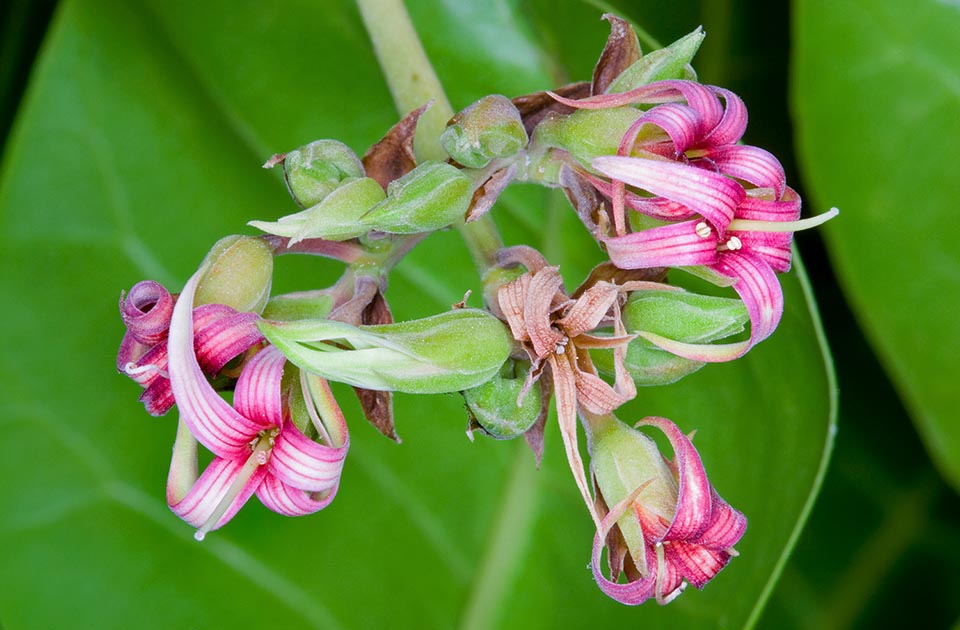Family : Anacardiaceae

Text © Domingo Fernandez Galvan
The cashew, Anacardium occidentale Linnaeus (1753), is native to northern South America. It belongs to the family of the Anacardiaceae, which includes about 77 genera and 600 species spread all over the world, mostly in the tropical and subtropical regions, with a few specimens in the temperate areas. It has well-known fruit and nut trees such as the mango (Mangifera indica L.) and the pistachio (Pistacia vera L.).
The common name ‘cashew’ comes from the Portuguese ‘caju’ and the Indian name ‘acaju’. In Spanish it is also called ‘merey’ or ‘marañón’.

Inflorescence of Anacardium occidentale, species of northern regions of South America that in nature can be 12 m tall © Giuseppe Mazza
The inflorescence is a panicle bearing hundreds of small flowers, which are white as they open but turn pink the next day. The flowers can be either hermaphrodite (perfect) or male (staminate).

The true fruit, reniform, below, contains one seed only. Protected by a shell, that emits when touched a caustic latex, is very nutritious and edible after toasting. It's carried by a big edible unusual peduncle, yellow or red, resembling an apple. Juicy, rich in vitamins and minerals, can be conversely consumed fresh © Giuseppe Mazza
Mozambique, Tanzania and Brazil are the main cashew nut producers.
Synonyms : Acajuba occidentalis (L.) Gaertn. (1788); Anacardium microcarpum Ducke (1922).
→ To appreciate the biodiversity within the ANACARDIACEAE family please click here.
